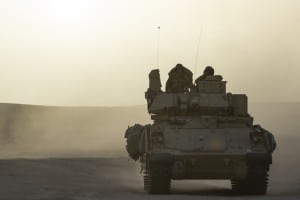
The Army on Wednesday held a virtual industry day for its rebooted Optionally Manned Fighting Vehicle (OMFV) competition ahead of the release of a final Request for Proposals (RFP) on Dec. 18, offering expanded details on the program’s desired characteristics and contract award plans. Officials said each of the up to five contracts awarded in June 2021 for OMFV Phase 2, which calls for industry to prove digital design prototypes, will be worth $61.6 million and cover 15 months of…

 By
By 











